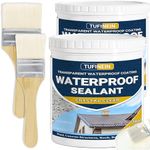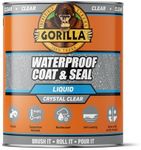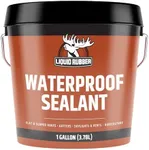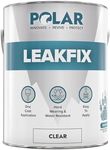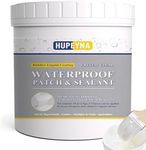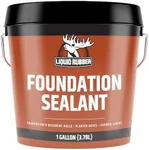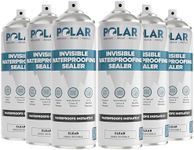Buying Guide for the Best Waterproof Sealer
Choosing the right waterproof sealer is crucial for protecting surfaces from water damage, whether it's for a deck, basement, or any other area exposed to moisture. The right sealer will not only extend the life of the material but also maintain its appearance and structural integrity. To make an informed decision, you need to understand the key specifications and how they align with your specific needs.Type of SealerWaterproof sealers come in various types, including penetrating sealers, surface sealers, and film-forming sealers. Penetrating sealers soak into the material and provide protection from within, making them ideal for porous surfaces like concrete and stone. Surface sealers create a protective layer on top of the material, suitable for non-porous surfaces. Film-forming sealers, such as acrylic or polyurethane, form a thick layer on the surface, offering robust protection and a glossy finish. Choose the type based on the material you are sealing and the level of protection you need.
Application MethodThe application method of a waterproof sealer can vary, including brush, roller, spray, or even a mop. Brush and roller applications are ideal for small areas or detailed work, providing precise control. Spraying is efficient for large surfaces, ensuring even coverage. Mop applications are typically used for floors and other flat surfaces. Consider the size and nature of the area you are sealing to determine the most convenient and effective application method for your project.
Drying TimeDrying time refers to how long it takes for the sealer to dry and become effective. This can range from a few hours to several days. Quick-drying sealers are convenient for projects that need to be completed swiftly, while longer drying times might be acceptable for less urgent tasks. Ensure the drying time fits within your project timeline and environmental conditions, such as humidity and temperature, which can affect drying speed.
DurabilityDurability indicates how long the sealer will last and how well it will protect the surface over time. High-durability sealers are essential for areas exposed to harsh weather conditions, heavy foot traffic, or constant moisture. These sealers often contain advanced formulas that resist wear and tear. For less demanding applications, a standard durability sealer may suffice. Assess the environmental conditions and usage patterns of the area to choose a sealer with appropriate durability.
UV ResistanceUV resistance is the sealer's ability to withstand damage from ultraviolet rays, which can cause fading, discoloration, and degradation over time. This is particularly important for outdoor surfaces exposed to direct sunlight. Sealers with high UV resistance will maintain their protective qualities and appearance longer. If your project involves outdoor surfaces, prioritize a sealer with strong UV resistance to ensure long-lasting protection.
Coverage AreaCoverage area refers to the amount of surface area that a specific quantity of sealer can cover, usually measured in square feet per gallon. This is important for estimating how much product you will need for your project. Sealers with higher coverage rates are more efficient and cost-effective. Calculate the total area you need to seal and compare it with the coverage rate of the sealer to determine the right amount to purchase.
FinishThe finish of a sealer can range from matte to glossy, affecting the appearance of the sealed surface. Matte finishes provide a natural look, while glossy finishes offer a shiny, polished appearance. Some sealers also enhance the color of the material, giving it a richer look. Consider the aesthetic you want to achieve and choose a finish that complements the material and your design preferences.




